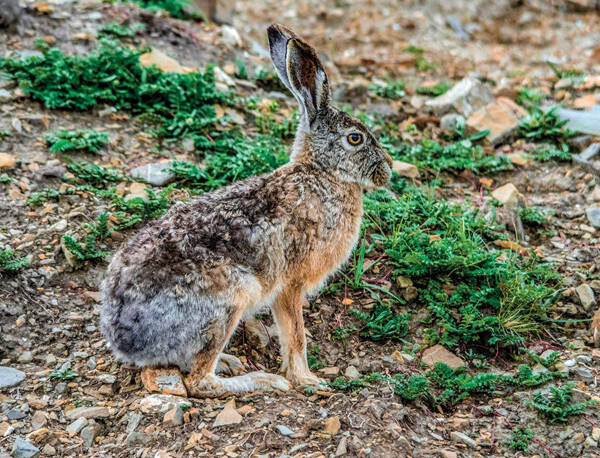Ochotona argentata
IUCN
LCBasic Information
Scientific classification
- name:Ochotona argentata
- Scientific Name:Ochotona argentata,Ningxia pika
- Outline:Lagoiformes
- Family:Lepus
Vital signs
- length:21-23.5cm
- Weight:176-236g
- lifetime:No verification yet
Feature
It is a larger species of Chinese pika.
Distribution and Habitat
It is only distributed in the Helan Mountain ridge top area at the junction of Ningxia and Inner Mongolia, and its distribution range is extremely limited.
It mainly lives in mountain gravel belts above 2,000 meters above sea level, living in the cracks of rubble, and its tunnel structure is simple.
Appearance
The ears are round and the limbs are strong. In winter, the back is silvery white, the fur is light iron gray, and the tips are pure black; the belly fur is white with a light yellow tint; the feet are white on the upper side and light gray on the lower side. In summer, the fur is bright rust red. There is a rust red patch on the side of the neck below the ear. Compared with the alpine pika, the eye sockets are significantly larger and the posterior palatine foramen is larger. The incisor foramen is separated from the palatine foramen, but there is a gap between the two foramen. The width between the orbits is greater than 4.8 mm. Chromosome 2n=38.
Details
Helan Mountain Pika, also known as Ningxia Pika, English name Silver Pika, is a species endemic to China.

Helan Mountain Pika is active during the day, active frequently at dawn and dusk, and will build typical pika haystacks. It mainly feeds on leaves and stems of Artemisia, Euphorbia and Poaceae plants. It does not hibernate in winter. It enters the breeding season in early April and produces one litter each year, with 2 to 4 pups per litter. This species was also considered a subspecies of the Alpine Pika or the Mongolian Pika, but it is different in morphology, chromosome number, molecular characteristics and vocal characteristics, and is relatively less vocal than the other two species of pikas.
The Helan Mountain Pika is currently in the "vulnerable" to "critically endangered" category. It is endemic to China and its distribution area is extremely narrow. In order to protect biodiversity, it is obviously necessary to implement key protection for it.
On July 3, 2017, the photos of small animals taken by Inner Mongolian netizen Hugo in the Helan Mountain National Forest Park in Ningxia attracted everyone's attention. On May 4, 2018, the relevant experts of Ningxia Forestry Department identified the small animal as the world's critically endangered species Helan Mountain Pika.
Because the number of Helan Mountain Pika is too rare, it is difficult to take a full-body photo of it now.
Listed in the second level of the "List of National Key Protected Wildlife in China".
Protect wild animals and eliminate game.
Maintaining ecological balance is everyone's responsibility!








